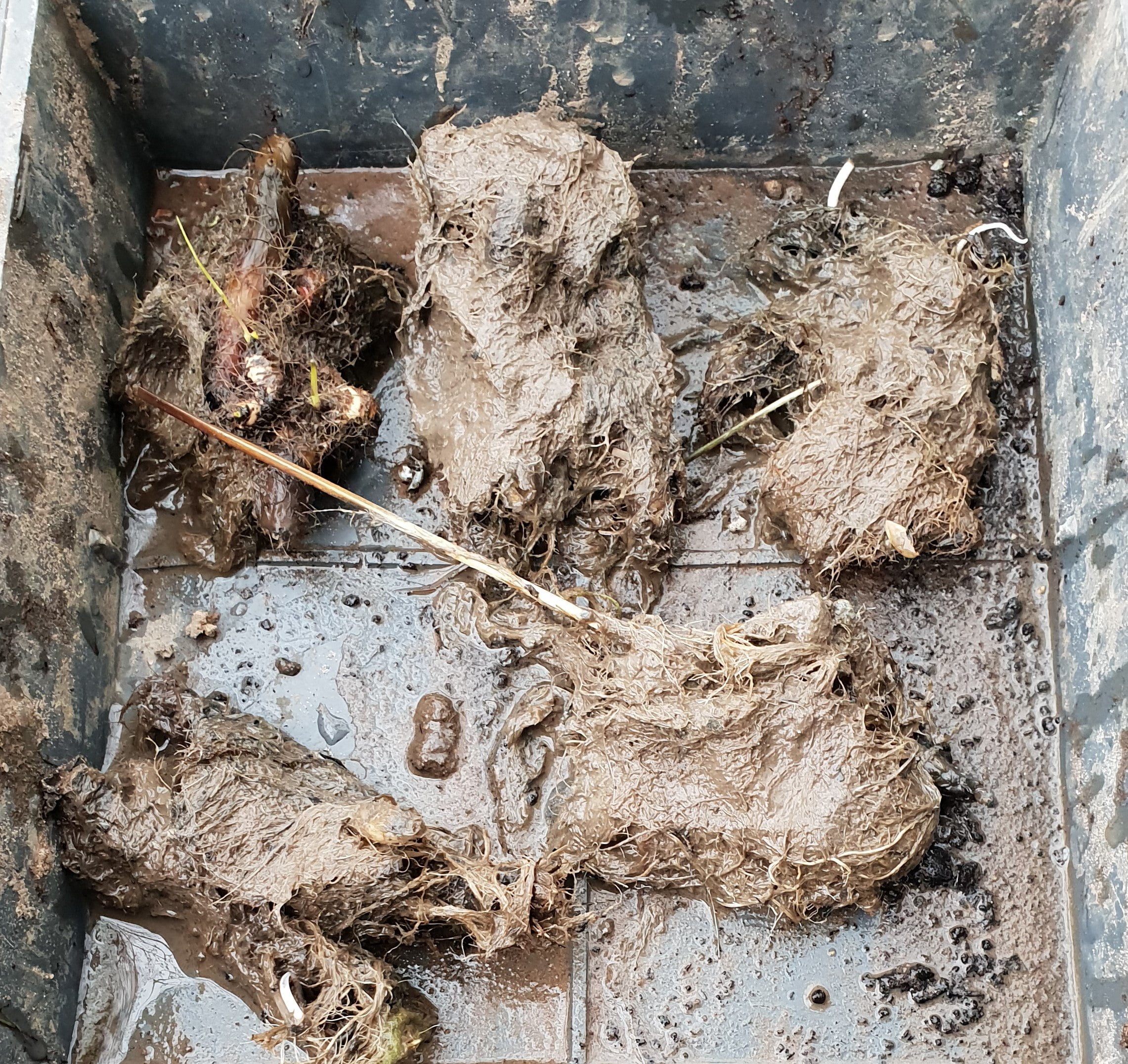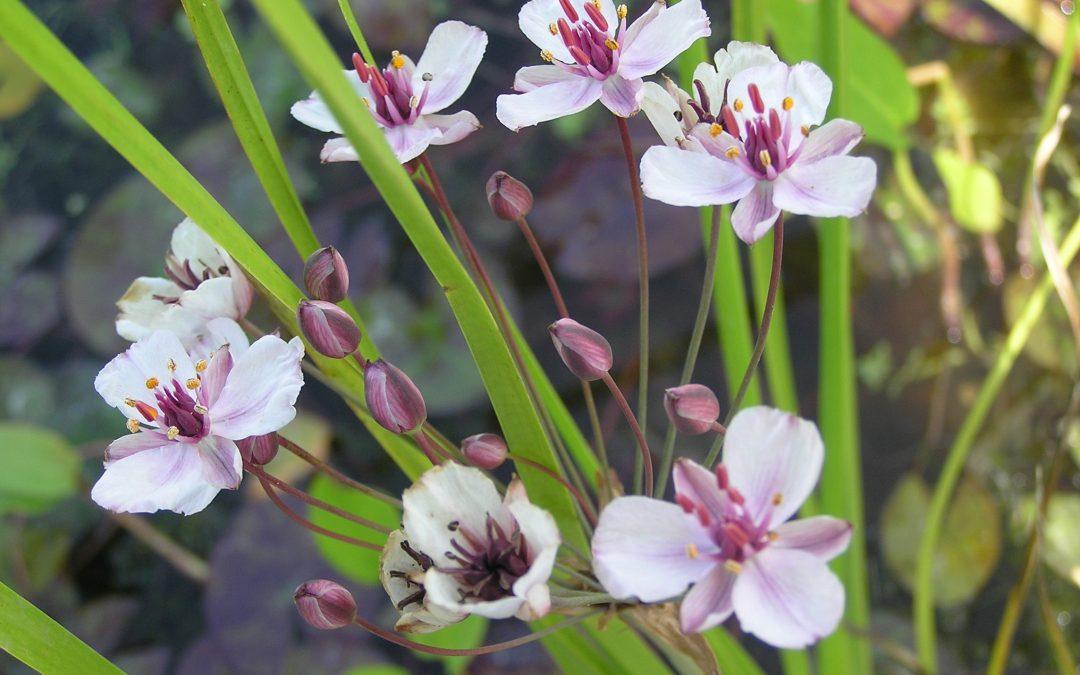Marginal or centre stage?
This native species is a good example of how adaptive pond plants can be. Generally it is sold as a plant for the margins of the pond, but we have found that it flowers best in water that is 10-20cms deep. Butomus loves it’s silty mud well below the surface of the water. Here its network of woody roots can run and spread by bits breaking off the parent system.
This rush has tall, three-cornered leaves, reddish in spring, when they appear to spike above the waterline. The name ‘butomus’ combines the Greek for ‘ox’ and ‘cut’ as the sharp edges of the leaf deter cattle from browsing the plant.
Encourage wildlife with butomus umbellatus
The leaves mature to an emerald green and flowers appear late in the season. From mid-July to August each flower stem will be topped by a pink umbel of flowers as wide as your hand. The flowers provide a useful food source for pollinating insects.
The leaves and flower stems grow up through the water and well into the air. They give damsel and dragonfly nymphs a ladder from the depths of the pond up into the open where they shed their larval skins to transform into a glorious and wondrous flying delight.

Plant during late winter for best results
Butomus foliage dies right back to the roots in late Autumn and they are largely dormant in Winter. If you buy one to plant before the Spring, you will get a muddy fibrous root with just one or two tiny shoots showing.
Early planting is essential however, if you want the plant to have a chance of flowering in its first season. Plant into a 5lt planting basket to give it room to grow, covering the roots with about 15cms of soil. Place in your pond with around 20cms of water covering the soil.
Butomus is a lovely plant that may well escape into other deeper corners of your pond and spring up in unexpected places bringing delight and critter friendly opportunities for the wildlife in your pond.

